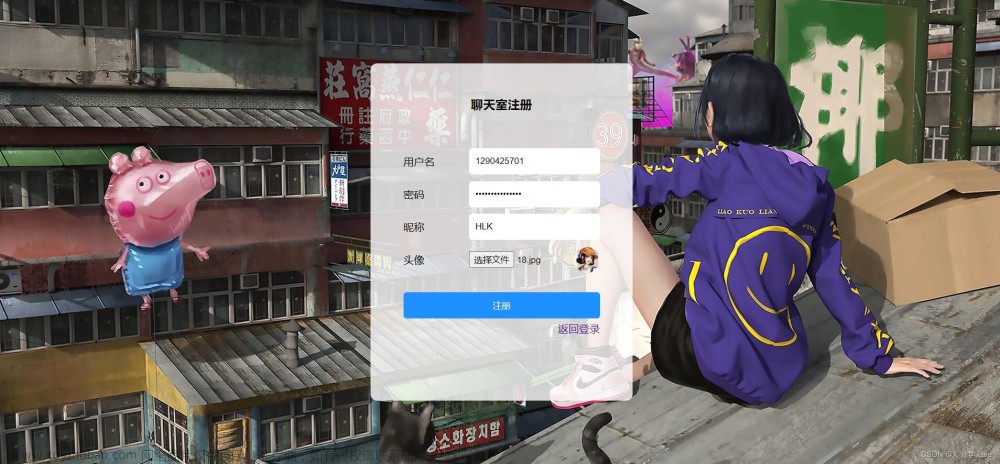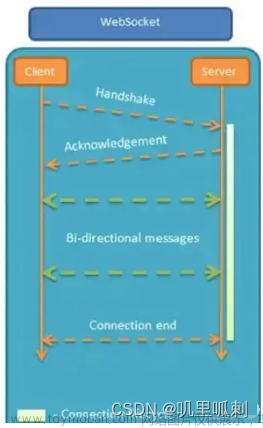Netty的介绍
Netty 是基于 Java NIO 的异步事件驱动的网络应用框架,使用 Netty 可以快速开发网络应用,Netty 提供了高层次的抽象来简化 TCP 和 UDP 服务器的编程,但是你仍然可以使用底层的 API。
Netty 的内部实现是很复杂的,但是 Netty 提供了简单易用的API从网络处理代码中解耦业务逻辑。Netty 是完全基于 NIO 实现的,所以整个 Netty 都是异步的。
Netty 是最流行的 NIO 框架,它已经得到成百上千的商业、商用项目验证,许多框架和开源组件的底层 rpc 都是使用的 Netty,如Dubbo、Elasticsearch 等等。
优点:
- API使用简单,学习成本低。
- 高度可定制的线程模型——单线程、一个或多个线程池。
- 功能强大,内置了多种解码编码器,支持多种协议。
- 社区活跃,发现BUG会及时修复,迭代版本周期短,不断加入新的功能。
- Dubbo、Elasticsearch都采用了Netty,质量得到验证。
- 更好的吞吐量,更低的等待延迟,更少的资源消耗
Netty的工作架构


各部分介绍:
BossGroup 和 WorkerGroup:
- bossGroup 和 workerGroup 是两个线程池, 它们默认线程数为 CPU 核心数乘以 2
- bossGroup 用于接收客户端传过来的请求,接收到请求后将后续操作交由 workerGroup 处理
Selector(选择器):
- 检测多个通道上是否有事件的发生
TaskQueue(任务队列):
- 上面的任务都是在当前的 NioEventLoop ( 反应器 Reactor 线程 ) 中的任务队列中排队执行 , 在其它线程中也可以调度本线程的 Channel 通道与该线程对应的客户端进行数据读写
Channel:
- Channel 是框架自己定义的一个通道接口,
- Netty 实现的客户端 NIO 套接字通道是 NioSocketChannel
- 提供的服务器端 NIO 套接字通道是 NioServerSocketChannel
- 当服务端和客户端建立一个新的连接时, 一个新的 Channel 将被创建,同时它会被自动地分配到它专属的 ChannelPipeline
ChannelPipeline:
- 是一个拦截流经 Channel 的入站和出站事件的 ChannelHandler 实例链,并定义了用于在该链上传播入站和出站事件流的 API
ChannelHandler:
- 分为 ChannelInBoundHandler 和 ChannelOutboundHandler 两种
- 如果一个入站 IO 事件被触发,这个事件会从第一个开始依次通过 ChannelPipeline中的 ChannelInBoundHandler,先添加的先执行。
- 若是一个出站 I/O 事件,则会从最后一个开始依次通过 ChannelPipeline 中的 ChannelOutboundHandler,后添加的先执行,然后通过调用在 ChannelHandlerContext 中定义的事件传播方法传递给最近的 ChannelHandler。
- 在 ChannelPipeline 传播事件时,它会测试 ChannelPipeline 中的下一个 ChannelHandler 的类型是否和事件的运动方向相匹配。
- 如果某个ChannelHandler不能处理则会跳过,并将事件传递到下一个ChannelHandler,直到它找到和该事件所期望的方向相匹配的为止。
项目结构

代码部分
1、pom文件
<dependency>
<groupId>org.springframework.boot</groupId>
<artifactId>spring-boot-starter</artifactId>
</dependency>
<dependency>
<groupId>org.springframework.boot</groupId>
<artifactId>spring-boot-starter-test</artifactId>
<scope>test</scope>
</dependency>
<dependency>
<groupId>org.springframework.boot</groupId>
<artifactId>spring-boot-devtools</artifactId>
<scope>runtime</scope>
<optional>true</optional>
</dependency>
<!--整合模板引擎 -->
<dependency>
<groupId>org.springframework.boot</groupId>
<artifactId>spring-boot-starter-thymeleaf</artifactId>
</dependency>
<dependency>
<groupId>org.springframework.boot</groupId>
<artifactId>spring-boot-starter-web</artifactId>
</dependency>
<dependency>
<groupId>io.netty</groupId>
<artifactId>netty-all</artifactId>
</dependency>
<dependency>
<groupId>org.projectlombok</groupId>
<artifactId>lombok</artifactId>
</dependency>
2、yml配置
server:
port: 8080
netty:
port: 8081
path: /chat
resources:
static-locations:
- classpath:/static/
spring:
thymeleaf:
cache: false
checktemplatelocation: true
enabled: true
encoding: UTF-8
mode: HTML5
prefix: classpath:/templates/
suffix: .html
3、netty实体配置类
import lombok.Data;
import org.springframework.boot.context.properties.ConfigurationProperties;
import org.springframework.stereotype.Component;
@Component
@ConfigurationProperties(prefix = "netty")
@Data
public class Netty {
/**
* netty监听的端口
*/
private int port;
/**
* websocket访问路径
*/
private String path;
}
4、启动类
5、服务器端
import com.netty.socket.config.WebSocketChannelConfig;
import com.netty.socket.entity.Netty;
import io.netty.bootstrap.ServerBootstrap;
import io.netty.channel.ChannelFuture;
import io.netty.channel.EventLoopGroup;
import io.netty.channel.nio.NioEventLoopGroup;
import io.netty.channel.socket.nio.NioServerSocketChannel;
import io.netty.handler.logging.LogLevel;
import io.netty.handler.logging.LoggingHandler;
import lombok.extern.slf4j.Slf4j;
import org.springframework.beans.factory.annotation.Autowired;
import org.springframework.stereotype.Component;
import javax.annotation.PreDestroy;
/**
* Netty服务器
* @author 流星
*/
@Component
@Slf4j
public class NettyWebSocketServer implements Runnable {
@Autowired
private Netty netty;
@Autowired
private WebSocketChannelConfig webSocketChannelConfig;
/**
* boss线程组,用于处理连接
*/
private EventLoopGroup bossGroup = new NioEventLoopGroup(1);
/**
* work线程组,用于处理消息
*/
private EventLoopGroup workerGroup = new NioEventLoopGroup();
/**
* 资源关闭——在容器销毁时关闭
*/
@PreDestroy
public void close() {
bossGroup.shutdownGracefully();
workerGroup.shutdownGracefully();
}
@Override
public void run() {
try {
//创建服务端启动助手
ServerBootstrap serverBootstrap = new ServerBootstrap();
serverBootstrap.group(bossGroup, workerGroup);
serverBootstrap.channel(NioServerSocketChannel.class)
.handler(new LoggingHandler(LogLevel.DEBUG))
.childHandler(webSocketChannelConfig);
//启动
ChannelFuture channelFuture = serverBootstrap.bind(netty.getPort()).sync();
log.info("【-----Netty服务端启动成功-----】");
channelFuture.channel().closeFuture().sync();
} catch (Exception e) {
e.printStackTrace();
bossGroup.shutdownGracefully();
workerGroup.shutdownGracefully();
} finally {
bossGroup.shutdownGracefully();
workerGroup.shutdownGracefully();
}
}
}
bootstrap:
- boostrap 用来为 Netty 程序的启动组装配置一些必须要组件,例如上面的创建的两个线程组
channel方法:
- 用于指定服务器端监听套接字通道NioServerSocketChannel,其内部管理了一个 Java NIO 中的ServerSocketChannel实例
channelHandler 方法:
- 用于设置业务职责链,责任链是我们下面要编写的,责任链具体是什么,它其实就是由一个个的 ChannelHandler 串联而成,形成的链式结构
bind 方法:
- 将服务绑定到端口上,bind 方法内部会执行端口绑定等一系列操,使得前面的配置都各就各位各司其职
sync 方法:
- 用于阻塞当前 Thread,一直到端口绑定操作完成。
6、 Channel配置类
import com.netty.socket.entity.Netty;
import com.netty.socket.handler.WebSocketHandler;
import io.netty.channel.Channel;
import io.netty.channel.ChannelInitializer;
import io.netty.channel.ChannelPipeline;
import io.netty.handler.codec.http.HttpObjectAggregator;
import io.netty.handler.codec.http.HttpServerCodec;
import io.netty.handler.codec.http.websocketx.WebSocketServerProtocolHandler;
import io.netty.handler.stream.ChunkedWriteHandler;
import org.springframework.stereotype.Component;
import javax.annotation.Resource;
/**
* 通道初始化对象
* @author 流星
*/
@Component
public class WebSocketChannelConfig extends ChannelInitializer<Channel> {
@Resource
private Netty netty;
@Resource
private WebSocketHandler webSocketHandler;
@Override
protected void initChannel(Channel channel) throws Exception {
ChannelPipeline pipeline = channel.pipeline();
// 对http协议的支持.
pipeline.addLast(new HttpServerCodec());
// 对大数据流的支持
pipeline.addLast(new ChunkedWriteHandler());
// HttpObjectAggregator将多个信息转化成单一的request或者response对象
pipeline.addLast(new HttpObjectAggregator(8000));
// 将http协议升级为ws协议. 对websocket的支持
pipeline.addLast(new WebSocketServerProtocolHandler(netty.getPath()));
// 自定义处理handler
pipeline.addLast(webSocketHandler);
}
}
addLast 方法:
- 将一个一个的 ChannelHandler 添加到责任链上并给它们取个名称(不取也可以,Netty 会给它个默认名称),这样就形成了链式结构。在请求进来或者响应出去时都会经过链上这些 ChannelHandler 的处理。
7、自定义处理类
import io.netty.channel.Channel;
import io.netty.channel.ChannelHandler;
import io.netty.channel.ChannelHandlerContext;
import io.netty.channel.SimpleChannelInboundHandler;
import io.netty.handler.codec.http.websocketx.TextWebSocketFrame;
import lombok.extern.slf4j.Slf4j;
import org.springframework.stereotype.Component;
import java.util.ArrayList;
import java.util.List;
/**
* 自定义处理类
* TextWebSocketFrame: websocket数据是帧的形式处理
*
* @author 流星
*/
@Component
@Slf4j
/**
* 设置通道共享
*/
@ChannelHandler.Sharable
public class WebSocketHandler extends SimpleChannelInboundHandler<TextWebSocketFrame> {
public static List<Channel> channelList = new ArrayList<>();
/**
* 通道就绪事件
*
* @param ctx
* @throws Exception
*/
@Override
public void channelActive(ChannelHandlerContext ctx) throws Exception {
Channel channel = ctx.channel();
//当有新的客户端连接的时候, 将通道放入集合
channelList.add(channel);
log.info("有新的连接加入。。。");
}
/**
* 通道未就绪事件
*
* @param ctx
* @throws Exception
*/
@Override
public void channelInactive(ChannelHandlerContext ctx) throws Exception {
Channel channel = ctx.channel();
//当有客户端断开连接的时候,就移除对应的通道
channelList.remove(channel);
log.info("有连接已经断开。。。");
}
/**
* 读就绪事件
*
* @param ctx
* @param textWebSocketFrame
* @throws Exception
*/
@Override
protected void channelRead0(ChannelHandlerContext ctx, TextWebSocketFrame textWebSocketFrame) throws Exception {
String msg = textWebSocketFrame.text();
log.info("msg:{}", msg);
//当前发送消息的通道, 当前发送的客户端连接
Channel channel = ctx.channel();
for (Channel channel1 : channelList) {
//排除自身通道
if (channel != channel1) {
channel1.writeAndFlush(new TextWebSocketFrame(msg));
}
}
}
/**
* 异常处理事件
*
* @param ctx
* @param cause
* @throws Exception
*/
@Override
public void exceptionCaught(ChannelHandlerContext ctx, Throwable cause) throws Exception {
cause.printStackTrace();
Channel channel = ctx.channel();
//移除集合
channelList.remove(channel);
}
}
- 对于自定义的 ChannelHandler, 一般会继承 Netty 提供的SimpleChannelInboundHandler类,并且对于 Http 请求我们可以给它设置泛型参数为 HttpOjbect 类,然后覆写 channelRead0 方法。
- channelRead0 方法中编写我们的业务逻辑代码,此方法会在接收到服务器数据后被系统调用
- channelActive 方法当连接建立时,此方法会被调用,我们在方法中构建了一个 Channel对象,并且通过 writeAndFlush 方法将请求发送出去
- channelRead0 方法用于处理服务端返回给我们的响应,打印服务端返回给客户端的信息
8、html
<!DOCTYPE html>
<html lang="en" xmlns:th="http://www.thymeleaf.org">
<head>
<meta charset="UTF-8">
<meta name="viewport" content="width=device-width, initial-scale=1.0">
<title>聊天室</title>
<link rel="stylesheet" href="/css/chat.css">
<script src="https://code.jquery.com/jquery-3.5.1.min.js"></script>
<!-- <script src="/js/chat.js"></script>-->
</head>
<body>
<div id="chat">
<div class="sidebar">
<div class="m-card">
<header>
<span class="name" >姓名:</span>
<span class="name" id="username"></span>
</header>
</div>
<div class="m-list">
<ul id="user_list">
</ul>
</div>
</div>
<div class="main">
<div class="m-message">
<ul id="msg_list">
</ul>
</div>
<div class="m-text">
<textarea placeholder="按 Enter 发送" id="my_test"></textarea>
<!-- <div class="pager_btn">-->
<!-- <button id="send">发送</button>-->
<!-- </div>-->
<!-- <div class="arrow_box">-->
<!-- 发送内容不能为空-->
<!-- <div class="arrow"></div>-->
<!-- </div>-->
</div>
</div>
</div>
<script>
$(function () {
//这里需要注意的是,prompt有两个参数,前面是提示的话,后面是当对话框出来后,在对话框里的默认值
var username = "";
while (true) {
//弹出一个输入框,输入一段文字,可以提交
username = prompt("请输入您的名字", ""); //将输入的内容赋给变量 name ,
if (username.trim() === "")//如果返回的有内容
{
alert("名称不能输入空")
} else {
$("#username").text(username);
break;
}
}
var ws = new WebSocket("ws://localhost:8081/chat");
ws.onopen = function () {
console.log("连接成功.")
}
ws.onmessage = function (evt) {
showMessage(evt.data);
}
ws.onclose = function (){
console.log("连接关闭")
}
ws.onerror = function (){
console.log("连接异常")
}
function showMessage(message) {
// 张三:你好
var str = message.split(":");
$("#msg_list").append(`<li class="active"}>
<div class="main-others">
<img class="avatar" width="35" height="35" src="/img/user.jpg">
<div class="main-text">
<div class="user_name">${str[0]}</div>
<div class="text">${str[1]}</div>
</div>
</div>
</li>`);
// 置底
setBottom();
}
$('#my_test').bind({
focus: function (event) {
event.stopPropagation()
$('#my_test').val('');
$('.arrow_box').hide()
},
keydown: function (event) {
event.stopPropagation()
if (event.keyCode === 13) {
if ($('#my_test').val().trim() === '') {
this.blur()
$('.arrow_box').show()
setTimeout(() => {
this.focus()
}, 1000)
} else {
$('.arrow_box').hide()
//发送消息
sendMsg();
this.blur()
setTimeout(() => {
this.focus()
})
}
}
}
});
$('#send').on('click', function (event) {
event.stopPropagation()
if ($('#my_test').val().trim() === '') {
$('.arrow_box').show()
} else {
sendMsg();
}
})
function sendMsg() {
var message = $("#my_test").val();
$("#msg_list").append(`<li class="active"}>
<div class="main-self">
<span class="main-text">` + message + `</span>
</div>
</li>`);
$("#my_test").val('');
//发送消息
message = username + ":" + message;
ws.send(message);
// 置底
setBottom();
}
// 置底
function setBottom() {
// 发送消息后滚动到底部
const container = $('.m-message')
const scroll = $('#msg_list')
container.animate({
scrollTop: scroll[0].scrollHeight - container[0].clientHeight + container.scrollTop() + 100
});
}
var textarea = document.querySelector('textarea');
textarea.addEventListener('input', (e) => {
textarea.style.height = '100px';
textarea.style.height = e.target.scrollHeight + 'px';
});
});
</script>
</body>
</html>
测试结果
模拟三个用户:


聊天测试:


后台输出: 文章来源:https://www.toymoban.com/news/detail-413627.html
文章来源:https://www.toymoban.com/news/detail-413627.html
附:参考资料
1、 超详细Netty入门,看这篇就够了!
2、SpringBoot+Netty+WebSocket实现在线聊天
3、Netty实战入门详解——让你彻底记住什么是Netty(看不懂你来找我)文章来源地址https://www.toymoban.com/news/detail-413627.html
到了这里,关于Spring boot 项目(二十三)——用 Netty+Websocket实现聊天室的文章就介绍完了。如果您还想了解更多内容,请在右上角搜索TOY模板网以前的文章或继续浏览下面的相关文章,希望大家以后多多支持TOY模板网!













